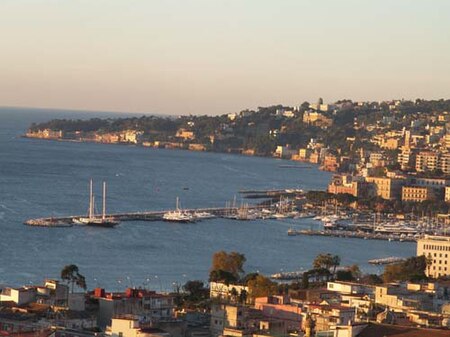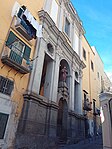Mergellina
Zones of Naples

Mergellina is a coastal section of the city of Naples, Italy. It is located in the quartiere of Chiaia. It stands at the foot of the Posillipo Hill and faces the Castel dell'Ovo. Some people tell the name derives from that of a shorebird called "mergoglino". There is some doubt amongst the locals as to the origin of the name "Mergellina". Other people may have the opinion that it is a corruption of "Mare Giallo" which refers to when the sea turned yellow due to floating tufa rock dust following a volcanic eruption many centuries ago. However very likely the real origin of the name is from Latin "mare ialinum", that stands for clear, transparent sea.
Excerpt from the Wikipedia article Mergellina (License: CC BY-SA 3.0, Authors, Images).Mergellina
Via Francesco Caracciolo, Naples Chiaia
Geographical coordinates (GPS) Address Nearby Places Show on map
Geographical coordinates (GPS)
| Latitude | Longitude |
|---|---|
| N 40.826805555556 ° | E 14.222638888889 ° |
Address
Via Francesco Caracciolo 10
80123 Naples, Chiaia
Campania, Italy
Open on Google Maps










